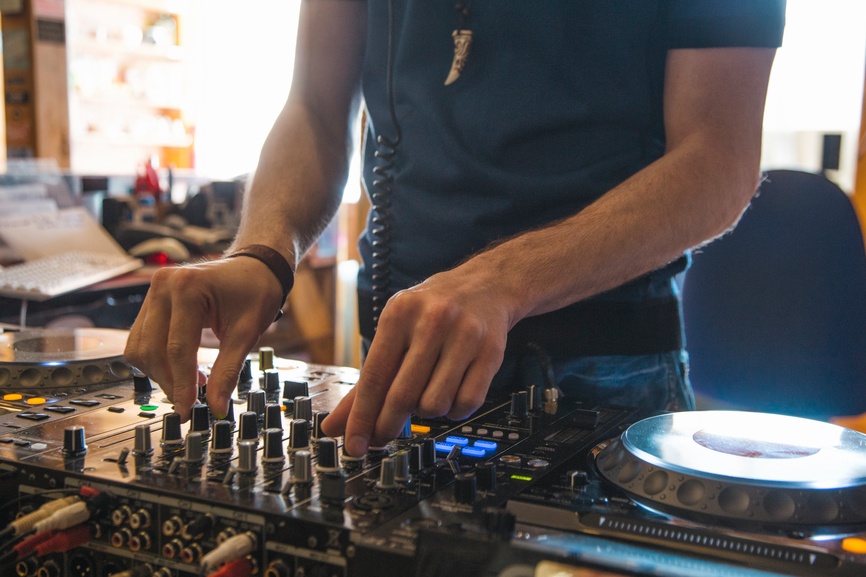Music Curation Drives Today’s Listening

The widespread concept of music curation is extremely new, an unexpected outcome of the internet’s collision with music industry and media. With the introduction of Napster’s MP3 file sharing platform in 1999, an incredible, ever-growing amount of free music became available to the public. In response, music gatekeepers such as radio and television programmers, record stores, and the music press were forced to consolidate and rethink their revenue models. The result of these tectonic changes is that today's listeners have more music options and fewer traditional go-betweens than ever before.
Necessity is the Mother of Invention
Music curation emerged as a way to fill this gap and help people decide what music should I listen to now? Answering this question can be surprisingly complex. While YouTube now accounts for 1 in 4 music listening hours, the majority of us select some type of playlist—possibly powered by YouTube itself—or digital radio station to deliver a sustained listening experience.
An Abbreviated History of the Playlist
- The term playlist was coined in the 1920s by the first radio disc jockeys.
- The introduction of cassette tapes in the 1960s birthed the tradition of custom mixtapes, marking the first time the general public has a cost-effective way to curate playlists.
- In 2001, Apple capitalized on new MP3 file sharing software by inventing the iPod, a revolutionary device that includes a playlist function for organizing songs.
- Music streaming blossomed in the early 2000s as an alternative to radio and personal music collections. While a variety of companies offer music streaming, they all function using on-demand playlists or curated stations.
Okay, Computer
At the turn of the century, Silicon Valley began developing a data framework for music curation. Pandora’s founders launched the Music Genome Project, which uses over 450 attributes to describe songs and a complex mathematical algorithm to organize them. Apple began cataloging songs across iPod users’ collections, which led to the “smart” playlist function of iTunes Genius and their eventual Apple Music streaming service.
The earliest data-powered playlists and music stations focused primarily on mirroring listeners’ personalized tastes. Building on these successes, the increasingly crowded music streaming space spent the past decade working towards profitability (a topic for another article) and product differentiation. Companies began moving towards curation based on specific moods and activities. With the highly subjective criteria of what songs are best suited to, for example, “Good Vibes” or “Yoga,” people with specialized music expertise are needed to add a human dimension in constructing playlists.
Algo”Rhythms” Plus Human-Powered Curation
With the 2015 launch of Apple Music, Apple entered the music streaming space touting its human-first approach to curation. “Algorithms can’t do it alone – you need a human touch,” cited Apple’s Jimmy Iovine, setting the stage for a battle with Spotify and other competitors. A brilliant marketing ploy and valid point, never mind that Apple was one of the primary architects of the same computer-based curation they were now criticizing. Fast-forward to the present, and streaming companies are all racing to fine-tune the best hybrid of computer and human-powered music curation.
The past 20 years have also seen a groundswell of user-generated music curation. Liberated from the confines of cassette tapes and CDs, music lovers have capitalized on MP3 files and streaming technology to share an enormous amount of music online. Streaming companies have made user-generated content part of their services, keeping listeners engaged while acknowledging that computers can never replace individuals in the curation of compelling playlists.
Beyoncé and Drake: Tastemakers as Music Curators
We’re all swimming in a vast sea of music, with past and present available at the click of a button. This affects not only listening but music creation. Beyoncé’s unconventional creative approach led Noisey UK to recently name her as the music industry’s forefront curator. “Beyoncé is a scientist of songs…She can take two songs, say ‘I like two lines, I like the melody then let me use that for a verse and a bridge and write the whole middle,’” according to songwriter Diana Gordon, who contributed to Lemonade.
Drake functions similarly as music curator, bringing the disparate styles and artists he loves into his songs and sharing these with his large fan base. It’s significant that Drake introduced his newest music release More Life as a playlist. Although playlists and curated mixes are clearly today’s dominant listening formats, Drake is the highest-profile artist to release something as long-form as an album while calling it just what it is…a series of songs that can be pulled apart, reordered, or perhaps even listened to in the suggested order.
In Short
Global pop stars, music experts, passionate music fans, and computer algorithms all contribute to today’s music curation. The challenge lies in finding the right balance between computer and human-powered song selection. We look forward to sharing Feed.fm’s unique approach to curation in part two.
To Be Continued…

 3 min
3 min